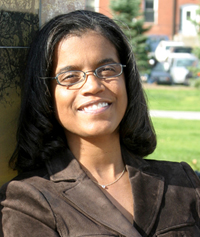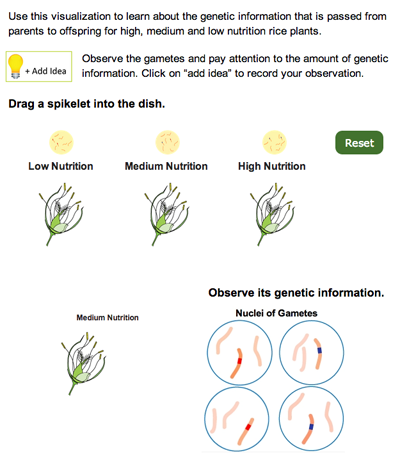CIRCL perspectives offer a window into the different worlds of various stakeholders in the cyberlearning community — what drives their work, what they need to be successful, and what they think the community should be doing. Share your perspective.

Michelle Williams is an Associate Professor in the Department of Teacher Education at Michigan State University.
What is unique about your work?
Our goal is to increase competency in genetics, K-9 — in comparison, most of the research has been in high school and up. Rather than starting from scratch, we’re integrating the best of what’s available in the Learning Sciences into powerful curriculum modules, each targeted at NGSS standards in particular grade levels. For example, in 5th grade, we incorporated just two aspects of a breakthrough gaming environment from Concord Consortium within the WISE Environment from Berkeley. We’ve coupled this with a driving question, “Why do plants of the same species vary in how they look?” Students explore the driving question by crossing plants. As they gain experience, we also layer in the capability within WISE to engage students in data analysis. And throughout, we’ve partnered with SRI International to design embedded assessments (including animations and simulations): students are using explanation-builder so that as they gather evidence, they can show their reasoning. So we’re pulling it all together to increase access to genetics much earlier than high school.
Why is it important to start learning genetics early?

By high school, really, even by middle school, most students have decided what careers they are interested in — and too few are choosing science-related careers. Genetics is a critically important topic both in modern science and in everyday life. In our program, 7th grade students have to figure out how to solve a hunger crisis by developing an ideal species of rice. Students are learning the mechanisms of genetics and seeing how solving scientific problems can link to their personal passions, which might be in the lab, in caring for the environment, in addressing challenges in society, or even in making good decisions for their families; as with genetically modified foods.
What kinds of partners are you looking for?
When I go to schools these days, I am amazed at what’s going on with games. I’m not a game developer, but I can see the potential to dramatically increase science understanding if we can link these games to the other necessary components of an ideal learning environment — driving questions, supports for reasoning and explanation, teacher professional development, embedded formative assessments… I’d love to build partnerships with game developers to grow the seeds of engagement and understanding that arise in games into broader and deeper science learning activities.
What should the Cyberlearning community be doing?
You can have wonderful innovations, but it’s really important that we engage all the stakeholders. We need more conversations with people in policy, business, practitioners, and our technical community. I’ve talked to scientists at USDA for example and they are deeply concerned with issues of science learning. Compared to other players in educational technology, the Cyberlearning community has decades of research built in to everything we do — and it’s not only that, we know how to work closely with teachers, so our activities are grounded not just in research but also in practice, too. And that means that we can make it real in a way no other community can. We need to bring key stakeholders together to engage in important conversations and to see how we can take Cyberlearning to another level of nationwide impact.
